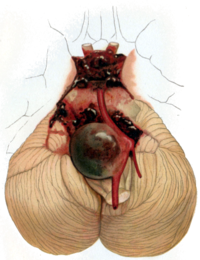
The Contour—Early Human Experience of a Novel Aneurysm Occlusion Device
Sign Up to like & getrecommendations! Published in 2020 at "Clinical Neuroradiology"
DOI: 10.1007/s00062-020-00876-4
Abstract: Background and Purpose Endosaccular flow disruption is a recognized treatment options for treating both unruptured and ruptured aneurysms. The Contour device is designed to target the neck of an aneurysm and cause flow disruption within the… read more here.
Keywords: aneurysm; aneurysm occlusion; occlusion device; contour early ... See more keywords

High-frequency optical coherence tomography predictors of aneurysm occlusion following flow diverter treatment in a preclinical model
Sign Up to like & getrecommendations! Published in 2022 at "Journal of NeuroInterventional Surgery"
DOI: 10.1136/jnis-2022-019275
Abstract: Background High-frequency optical coherence tomography (HF-OCT) is an intravascular imaging method that allows for volumetric imaging of flow diverters in vivo. Objective To examine the hypothesis that a threshold for both volume and area of… read more here.
Keywords: occlusion; malapposition; area; flow diverter ... See more keywords

Brain aneurysm and parent vessel remodeling after flow diversion treatment: a proposed modification for Cekirge-Saatci classification (mCSC)
Sign Up to like & getrecommendations! Published in 2022 at "Journal of NeuroInterventional Surgery"
DOI: 10.1136/jnis-2022-019757
Abstract: Endovascular therapy is the preferred treatment approach for managing ruptured intracranial aneurysms after studies demonstrated an overall safer profile than surgical clipping. 1 Evolving and refining technology also settled neuro-intervention as the main approach for… read more here.
Keywords: classification; aneurysm parent; brain aneurysm; aneurysm occlusion ... See more keywords

Determinants of cerebral aneurysm occlusion after embolization with the WEB device: a single-institution series of 215 cases with angiographic follow-up
Sign Up to like & getrecommendations! Published in 2022 at "Journal of NeuroInterventional Surgery"
DOI: 10.1136/neurintsurg-2022-018780
Abstract: Background Woven EndoBridge (WEB) devices are becoming a reliable option for the treatment of wide-neck bifurcation aneurysms, but clear predictive factors are still missing to understand the one in five aneurysm remnant rate. Objective To… read more here.
Keywords: web device; occlusion; web; angiographic follow ... See more keywords